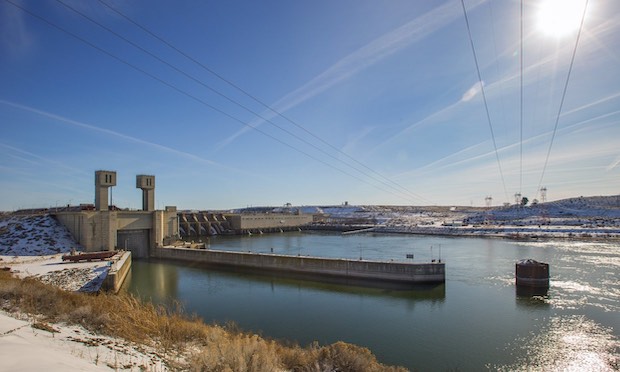forum
library
tutorial
contact

Proposal to Remove Snake and
Columbia River Dams Rejected
by Ben Fisher
Seafood Source, March 17, 2020
|
the film forum library tutorial contact |

|
Proposal to Remove Snake and
by Ben Fisher
|
Removal of the dams would indeed "provide a long-term benefit to species that spawn or rear in the main stem Snake River habitats."
 A federal draft report has rejected proposals to remove hydroelectric dams on the Snake River and Columbia River, which proponents of the removal say could help save wild salmon.
A federal draft report has rejected proposals to remove hydroelectric dams on the Snake River and Columbia River, which proponents of the removal say could help save wild salmon.
According to a Seattle Times report, federal agencies decided that the removal of the dams would indeed "provide a long-term benefit to species that spawn or rear in the main stem Snake River habitats." However, removing the dams on the river would also create negative impacts, including:
In 2016, U.S. District Court Judge Michael Simon ruled that federal agencies should reconsider the future of the dams on the Snake River as they relate to endangered salmon and steelhead trout.
"Despite billions of dollars spent on these efforts, the listed species continue to be in a perilous state," Simon wrote. "The [Federal Columbia River Power System] remains a system that cries out for a new approach."
The new report is the culmination of research ordered by Simon.
According to the environmental impact statement (EIS), more than 30 stakeholders across the region -- including Native American tribes, federal agencies, and state and local governments -- came together to work on the report, which was prepared by the U.S. Army Corps of Engineers, Bureau of Reclamation, and the Bonneville Power Administration.
The report "identifies and evaluates" six options for the operations, maintenance, and configuration of 14 federally managed dams and reservoirs referred to as the Columbia Rivers System. Faulting each of the options, the EIS instead proposes a "preferred alternative" which is "comprised of a suite of operational and structural measures that allow us to meet the ... objectives of the EIS, including those to benefit species listed as threatened and endangered under the Endangered Species Act." More specifically, the preferred alternative would include improvements to allow lamprey to pass through the dams, and would increase dam spillage to help migrating fish.
 Those who support the dams consider the report to be an assertion of the importance of clean hydropower in the region. Bonneville Power Administration Administrator Elliot Mainzer hailed the EIS as a "milestone."
Those who support the dams consider the report to be an assertion of the importance of clean hydropower in the region. Bonneville Power Administration Administrator Elliot Mainzer hailed the EIS as a "milestone."
"This was a truly regional effort, and we are especially grateful to our tribal partners for providing their perspectives and expertise on the Columbia River system," Mainzer said. The BPA is the vendor of hydroelectricity produced by the dams, and has also bankrolled salmon restoration at a cost of USD 18 billion (EUR 16.2 billion).
"Once again, the science has determined that destroying the four Lower Snake River dams would have high environmental and economic costs," said Todd Myers, director of the Washington Policy Center Environmental, a conservative think tank.
In response to the EIS release, Northwest RiverPartners Executive Director Kurt Miller appealed to opponents to look at the larger picture.
"This is a much, much bigger issue than the Snake River salmon. If worldwide salmon populations are doing poorly because of climate change and carbon, does it make sense to tear out 1,000 average megawatts of carbon-free electricity?" he said. "For so many reasons, it's bad public policy."
Once the report is finalized, salmon advocates who believe that removing the four Lower Snake River dams is crucial to help threatened and endangered salmon may take their message to U.S. District Court. Four of the 13 salmon runs listed as federally endangered or threatened return to the Snake River.
National Wildlife Federation Regional Director Tom France dismissed the preferred alternative as "wholly inadequate," and Earthjustice attorney Todd True, who called the plan "the same meal with more garnish," said that a lawsuit would be "certainly a tool in the toolbox, but is not the one we are focused on right now." Instead, he suggested working to find a better resolution than what was proposed in the EIS.
The draft copy is subject to 45 days of public comment. Next, the National Oceanic and Atmospheric Administration will decide whether the report takes enough action to protect wildlife such as salmon and orcas. A final version of the EIS is expected in September.
learn more on topics covered in the film
see the video
read the script
learn the songs
discussion forum
